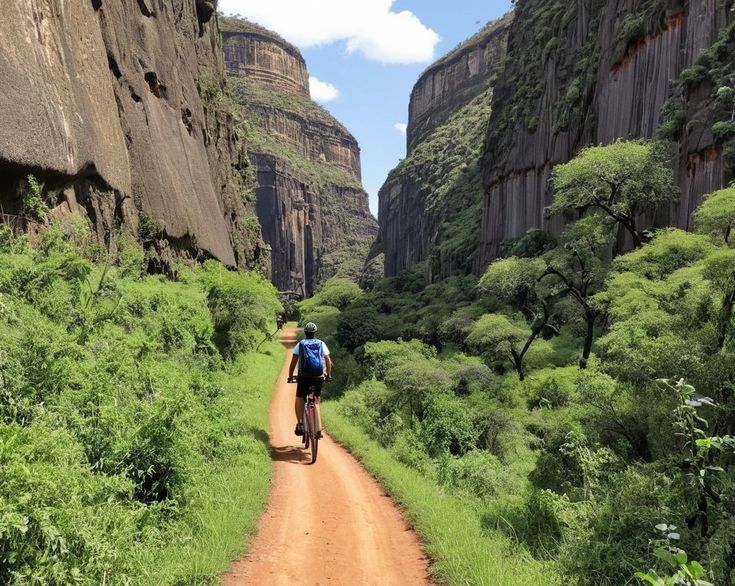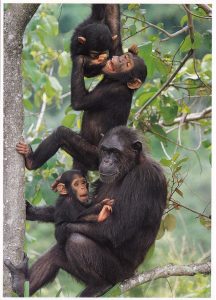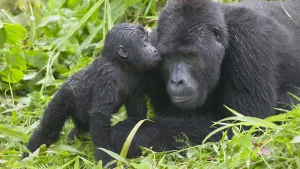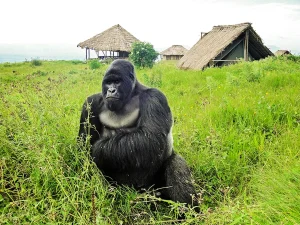Hell’s Gate National Park in Kenya offers one of the most unique safari experiences in the world — the chance to cycle among wildlife in a dramatic landscape of cliffs, gorges, and geothermal features. Unlike most parks in Kenya where vehicles dominate, Hell’s Gate allows visitors to explore its terrain on two wheels, making it an unforgettable destination for outdoor enthusiasts. Cycling at Hell’s Gate National Park
Can you cycle inside Hell’s Gate National Park?
Yes, you can cycle inside Hell’s Gate National Park, and it is one of the park’s most popular attractions. The park is among the few protected areas in Kenya where cycling is allowed. Visitors can bring their own bikes or rent one at the park’s entrance. Cycling inside the park is not only permitted but also encouraged, as it provides a close-up, eco-friendly way to explore its stunning landscape and spot wildlife.
The park has well-marked gravel and dirt trails that allow cyclists to navigate safely. Unlike traditional safari vehicles, cycling offers a quieter, more immersive experience, where you can hear birdsong, feel the wind against your face, and appreciate the park’s raw beauty at a slower pace.
How long is the cycling trail at Hell’s Gate?
The main cycling trail at Hell’s Gate National Park is approximately 8 to 10 kilometers long, stretching from the Elsa Gate (main entrance) to the Lower Gorge. For those looking to extend their ride, there are additional loops and side paths, with some visitors covering up to 20 kilometers depending on their route.
The cycling trail is relatively flat with occasional inclines, making it suitable for beginners and experienced riders alike. The most popular route follows the central road flanked by towering cliffs, often referred to as the “Main Gorge route.” From this trail, cyclists can access key sites such as Fischer’s Tower, Central Tower, and the dramatic Lower Gorge.
Is it safe to cycle at Hell’s Gate National Park?
Cycling at Hell’s Gate is generally safe as long as visitors follow park rules and exercise caution. The park is home to large herbivores such as zebras, giraffes, buffalo, and antelopes, which are safe to observe from a distance. There are no predators like lions inside the cycling areas, making it safer than most safari parks.
However, cyclists should remain alert around buffalo, which can be unpredictable. It is advisable to keep a safe distance from all animals and never attempt to feed or provoke them. Helmets are strongly recommended, and carrying enough drinking water is essential, especially on hot days. For added security, visitors can hire a guide who is familiar with the park and its wildlife.
What animals can you see while cycling at Hell’s Gate?
Cycling through Hell’s Gate offers the chance to see a wide range of wildlife. Common animals include zebras, giraffes, elands, buffaloes, impalas, gazelles, and warthogs. Baboons are frequently seen along the trails, often near rocky outcrops. Bird enthusiasts can spot species like the Verreaux’s eagle, vultures, and swifts that nest along the cliffs.
The park’s open landscapes mean wildlife is easy to spot, and cycling allows visitors to get closer than they might from inside a vehicle. For photographers, the combination of wildlife, cliffs, and geothermal features makes this park one of Kenya’s most picturesque destinations.
How much is bike rental at Hell’s Gate National Park?
Bike rentals are readily available at the park’s entrance gate and nearby Naivasha town. Rental prices typically range between KES 500 and KES 1,000 (USD 5–10) per day, depending on the type and condition of the bike. Helmets are often included but should always be requested for safety.
Those who bring their own bikes can save on rental costs and ride equipment they are already comfortable with. However, bike hire within the park is convenient, especially for tourists traveling without cycling gear.
Do you need a guide to cycle at Hell’s Gate?
Hiring a guide is not mandatory, but it is highly recommended for first-time visitors. Guides know the park’s routes, wildlife behavior, and hidden scenic spots that visitors may otherwise miss. A guide also enhances safety by helping cyclists navigate rocky sections and advising on how to behave around animals.
Guided cycling tours are usually affordable, with fees ranging from KES 1,500 to KES 2,500 (USD 15–25) per group, depending on the length of the ride. For those cycling alone or with children, a guide offers peace of mind and a more enriching experience.
How much is the entry fee for cycling at Hell’s Gate National Park?
The Kenya Wildlife Service (KWS) manages Hell’s Gate National Park and charges entry fees depending on residency status:
- Kenyan Citizens: Adults KES 300, Children KES 215
- Residents: Adults KES 600, Children KES 300
- Non-Residents (Tourists): Adults USD 26, Children USD 17
Cyclists do not pay extra to bring in their bikes, though bike rentals come at an additional cost. Payments can be made via M-Pesa or card at the park gate.
How do you get to Hell’s Gate from Nairobi?
Hell’s Gate National Park is located about 90 kilometers northwest of Nairobi, near Lake Naivasha. The drive from Nairobi takes approximately 2 to 3 hours depending on traffic. Visitors can reach the park by private car, tour van, or public transport.
For those using public transport, matatus (shared minibuses) from Nairobi to Naivasha are available, after which one can take a taxi or boda boda (motorbike) to the park entrance. The main entry point is the Elsa Gate, which is closest to Naivasha town.
What is the best time of year to go cycling at Hell’s Gate?
The best time to cycle at Hell’s Gate is during the dry seasons, which run from June to October and January to March. During these months, the trails are dry, wildlife is easy to spot, and the weather is pleasant for cycling.
The rainy seasons (April–May and November–December) can make the trails muddy and slippery, making cycling more challenging. However, the park remains open year-round, and some visitors enjoy the lush greenery that comes with the rains.
Can you bring your own bike to Hell’s Gate?
Yes, cyclists are allowed to bring their own bikes into Hell’s Gate National Park. This is often preferred by seasoned riders who are comfortable with their own equipment. Bringing your own bike can save on rental costs and ensure a better riding experience.
Visitors should ensure their bikes are in good condition and carry a repair kit, as there are limited repair facilities inside the park. A mountain bike or hybrid bike is recommended to handle the gravel and rocky terrain.
Are there hiking trails in Hell’s Gate National Park in addition to cycling routes?
Yes, in addition to cycling, Hell’s Gate is known for its hiking trails. The most famous is the Lower Gorge hike, which takes visitors through narrow rock formations, hot springs, and dramatic cliffs. The gorge hike usually requires a local guide for safety, as flash floods can occur during rainy seasons.
Other trails include short hikes to Fischer’s Tower and Central Tower, where visitors can enjoy climbing or panoramic views. Combining cycling with a hike offers the best of both worlds — a thrilling ride followed by a scenic trek.
How long does it take to cycle through Hell’s Gate?
Cycling through the main trail of Hell’s Gate National Park typically takes 2 to 3 hours, depending on the rider’s pace and the number of stops along the way. Visitors who choose to cycle to the gorge and back may spend 4 hours or more inside the park.
Many cyclists combine their ride with sightseeing, photography, and occasional hikes, which can extend the visit to a full day. Starting early in the morning is recommended to avoid the midday heat.
What should you pack for cycling at Hell’s Gate National Park?
Cyclists should come prepared with the following essentials:
- Helmet and safety gear
- Comfortable cycling clothes and closed shoes
- Sufficient drinking water (at least 2 liters per person)
- Sunscreen and a hat
- Snacks or energy bars
- Camera or binoculars for wildlife viewing
- Small first aid and bike repair kit
Being well-prepared ensures a safe and enjoyable ride inside the park.
Are children allowed to cycle at Hell’s Gate National Park?
Yes, children are allowed to cycle at Hell’s Gate, making it a great family-friendly destination. However, parents should supervise them closely, especially around wildlife and steep paths. Smaller bikes are available for hire at the entrance, but families bringing their own equipment may have more suitable options for kids.
Guided cycling tours are recommended for families with children to ensure safety and a smooth experience.
What other activities can you do besides cycling at Hell’s Gate?
Besides cycling, Hell’s Gate offers several other activities:
- Hiking and Gorge Exploration – Walking through the Lower Gorge with its towering cliffs and hot springs.
- Rock Climbing – Popular at Fischer’s Tower and Central Tower.
- Birdwatching – With over 100 bird species, including vultures and eagles.
- Geothermal Tours – Visiting Olkaria Geothermal Station nearby.
Cycling combined with these activities makes Hell’s Gate one of the most versatile parks in Kenya.
Final Thoughts
Cycling at Hell’s Gate National Park is a unique adventure that combines wildlife, dramatic landscapes, and outdoor exercise. With affordable entry fees, accessible trails, and bike rental options, it caters to both casual tourists and seasoned cyclists. Whether you bring your own bike or hire one at the gate, cycling here offers an experience unlike any other safari in Kenya.




